Brown. It's a vital color in acrylic painting, used to create subject matter as widely varied as hair, skin tones, chocolates, trees, earth, and hardwood floors. Do you know how to mix brown paint?
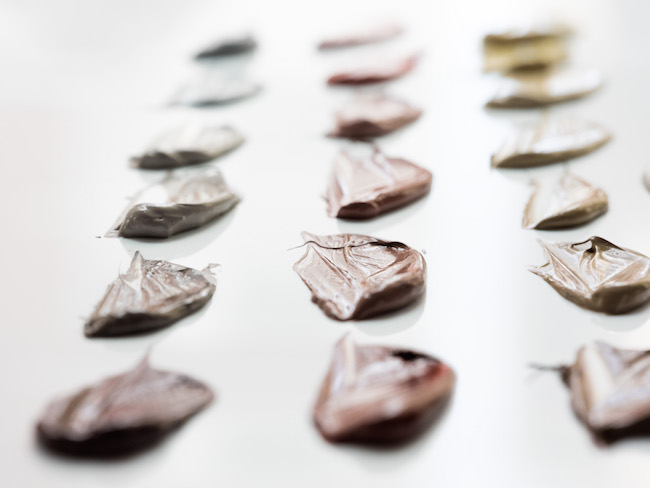
Mixing brown paint is an extremely easy process with acrylic paint. While there is more than one way to mix brown paint, this method, which employs the primary colors, is ideal for beginners because it is easy, utilizes painting supplies that are likely already in your supplies, and allows for a lot of refinement and customization in your mixing.
How to Mix Brown Paint in Acrylic:
You'll need:
- Acrylic paint in red, yellow, blue and opaque white
- A palette
- A palette knife
- A paintbrush
- A work surface for testing mixed colors
- Water for washing your brush
- Paper towels for cleaning off palette knife between mixing colors
Note: I used Cadmium red, Cadmium yellow medium, cerulean blue and Titanium white paint. You don't have to use these exact hues, but try to use a fairly classic-looking version of each primary color and an opaque white paint.
Step 1:
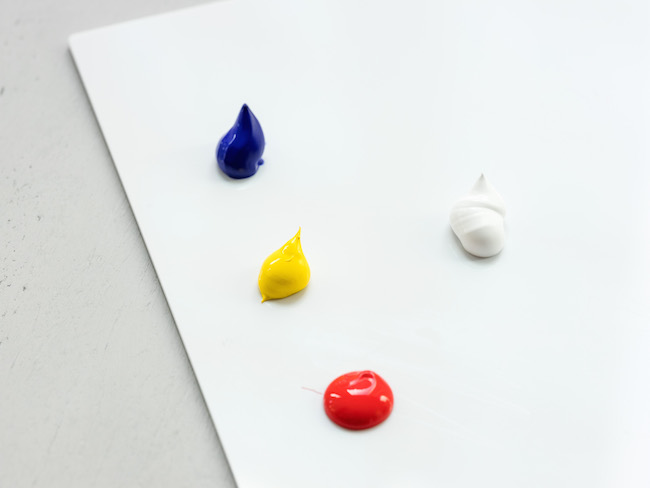
Set up your palette. Place approximately equal-sized dollops of red, yellow, and blue on your palette, with plenty of space between each color. Add a dollop of white too.
Step 2:
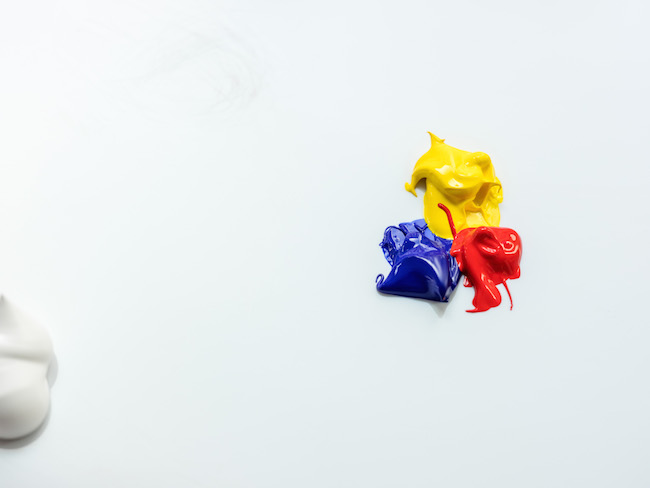
Combine an approximately equal portion of each of the primary colors.
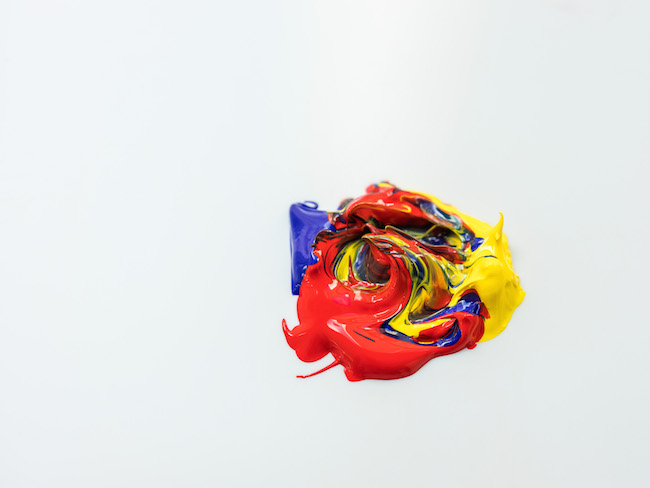
Mix together using your palette knife. It will progress from being three distinct colors to a muddy mixture to brown. Your results may vary slightly, especially if you were using a different hue of any of the primary colors than I used.
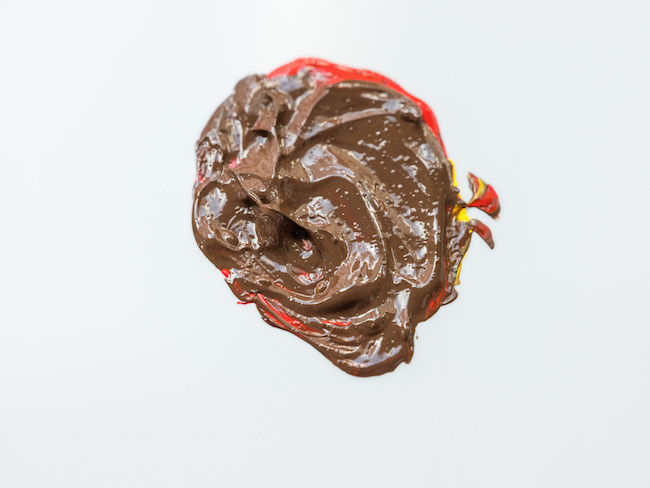
Step 3:
This step is something I personally like to do, and think you may like, too. Once you've mixed this "primary" brown, add in a touch of white to the mixture.
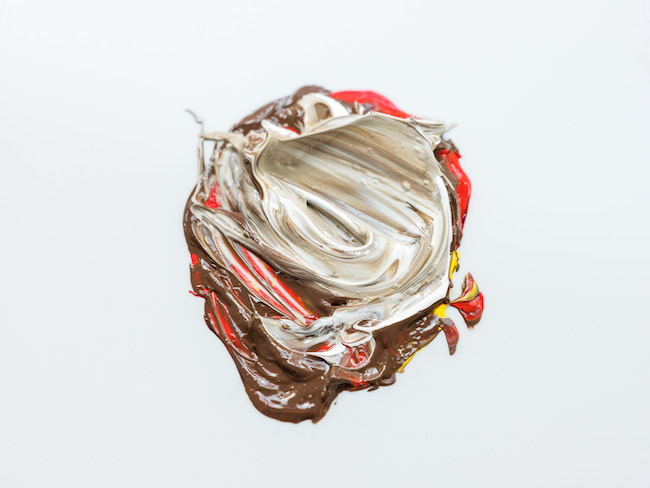
This can be a smaller amount than the other colors that you added to make the brown. It is not meant so much to lighten the color as it is to enforce it. The opaque white paint will make your brown color more opaque, giving it more bang for your buck in terms of canvas or painting surface coverage.
Step 4:
So now you have a basic, fairly soft brown color. Is it the exact brown you'd like to use for your painting? Awesome; you're good to go.
However, oftentimes in painting, you need a more specific version of a color to fit your vision. This brown can be refined by adding more or less of your primary colors and white to make it perfectly suited for your needs. Here are some basic moves to alter your brown. Play with these methods, adjusting them to suit your needs.
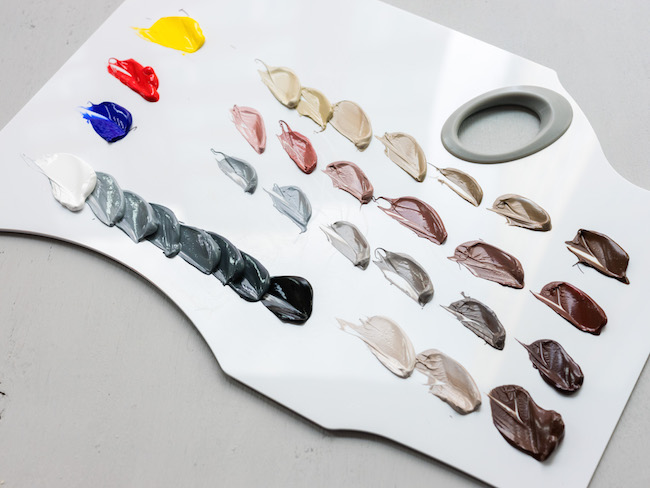
For a lighter brown
Lighter browns work well for painting highlights, coffee with milk and light hair colors. For a lighter brown, you can add white paint a little at a time until it has reached your desired tone. Adding a touch of one of the primary colors can also be nice, keeping the color from becoming too beige and bland. Adding red or yellow will make for a warmer light brown, and a touch of blue will make for a cooler light brown.
For a warm brown
Warm browns work well for painting brick, warm wood tones, and trees in sunlight. To make your brown warmer, experiment with adding red and/or yellow paint a little at a time. If the mixture becomes too warm, you can add a touch of blue paint to cool it down.
For a cool brown
Cool browns work well for painting cool wood tones, wintry trees, and dark hair or fur. To make your brown cooler, experiment with adding blue paint a little at a time to your basic brown mixture. If it becomes too bluish, you can add a little bit more red and yellow paint to bring it back into brown territory.
For a darker brown
Darker browns work well for painting hair, twilight scenes, and dark wood. While it may be tempting to create dark brown tones using black paint, this can often create muddy tones. This may work for your painting, but often it does not. For a brown that is dark but still bright, add a dark blue paint such as ultramarine to the mix.
For more information on mixing acrylic paint, check out An Easy Method for Mixing Skin Tones with Acrylic Paint
Are you interested in skin tone color mixing across mediums? Or perhaps portrait painting? Check out these relevant classes and articles from Craftsy:
Paint Better Portraits: Realistic Skin TonesExplore How to Create Skin Tones With Colored Pencils
Acrylic Painting: Basics & Beyond
Know Your Acrylic Paints: Expand Your Palette
Our friends at Artist's Academy also have some helpful videos on the subject:
Painting Portraits: Mixing Warm & Cool Colors for Skin TonePainting Portraits: Skin Tone, Age & Gender
Painting the Color Wheel

Very useful info, thank you
Thank you! This information on how to cool and warm the brown color has helped.
Thanks for info on making brown
Thank you, your site is a true Gem!
new to color mixing
This tutorial was informative and extremely helpful. Thank you!
I use multi surface folkart, and Americana acrylic paints. I’m looking how to make a nice soft light brown, and a highlight to paint on a little girl statue. Can you help me out with this?
Nice